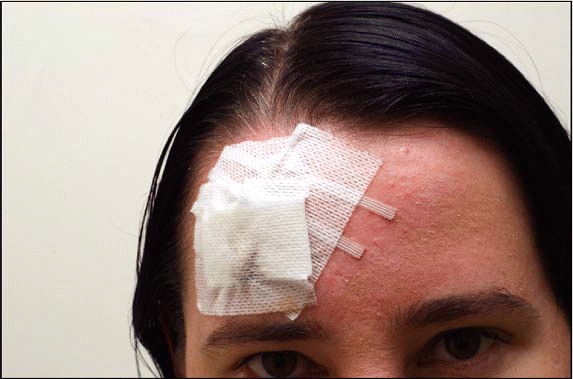Tanning prior to surgery can lead to postoperative hyperpigmentation, so patients should be instructed to stay out of sun before surgery. Patients should also be advised to use a sunscreen over scars for at least six months following the surgery. Scars are more susceptible to scarring, she said. A sunscreen of SPF 30 with both UVA and UVB coverage should be used daily.
Explore This Issue
February 2008After surgery, Dr. Hessler suggests using a simple regimen of cleaning the scar with mild soap and water and a cotton swab saturated with half-strength hydrogen peroxide along the length of the incision to remove any blood or crusting. The peroxide should be gently wiped away.
Keep the incision clean and moist for the first week. Apply topic polysporin or double antibiotic ointment to the incision for three days after surgery; after that use Vaseline, she advised. Triple antibiotic ointment is not recommended because it can occasionally lead to a contact dermatitis presenting as significant redness along the skin incision, she said.

Bed rest depends on the extent of the surgery and patients’ subjective assessment of how they feel. The head should be elevated during sleep to improve lymphatic draining and reduce any tension on the scar, she noted.
Part of preoperative planning includes inspection of any previous surgical scars to see how the patient has healed. For patients who are prone to keloids or hypertrophic scarring (i.e., darker-skinned individuals), Dr. Hessler recommends topical silicone gel sheeting applied to the scar with a bandage. This will reduce the incidence of keloids or hypertrophic scars by at least 50%.
Scars are noticeable because they are discolored, irregular, raised, or cross facial subunits. Each problem requires different treatment. Pulse-dye laser or intense pulse light laser (IPL) can be used to treat scars that are raised or erythematous. Use of these lasers will decrease blood flow and redness and flatten out the scar, Dr. Hessler said. If the scar is irregular or the edges are not well aligned, the best treatment is either scar revision surgery using a geometric broken line closure or dermabrasion to smooth out the skin.
Leave a Reply